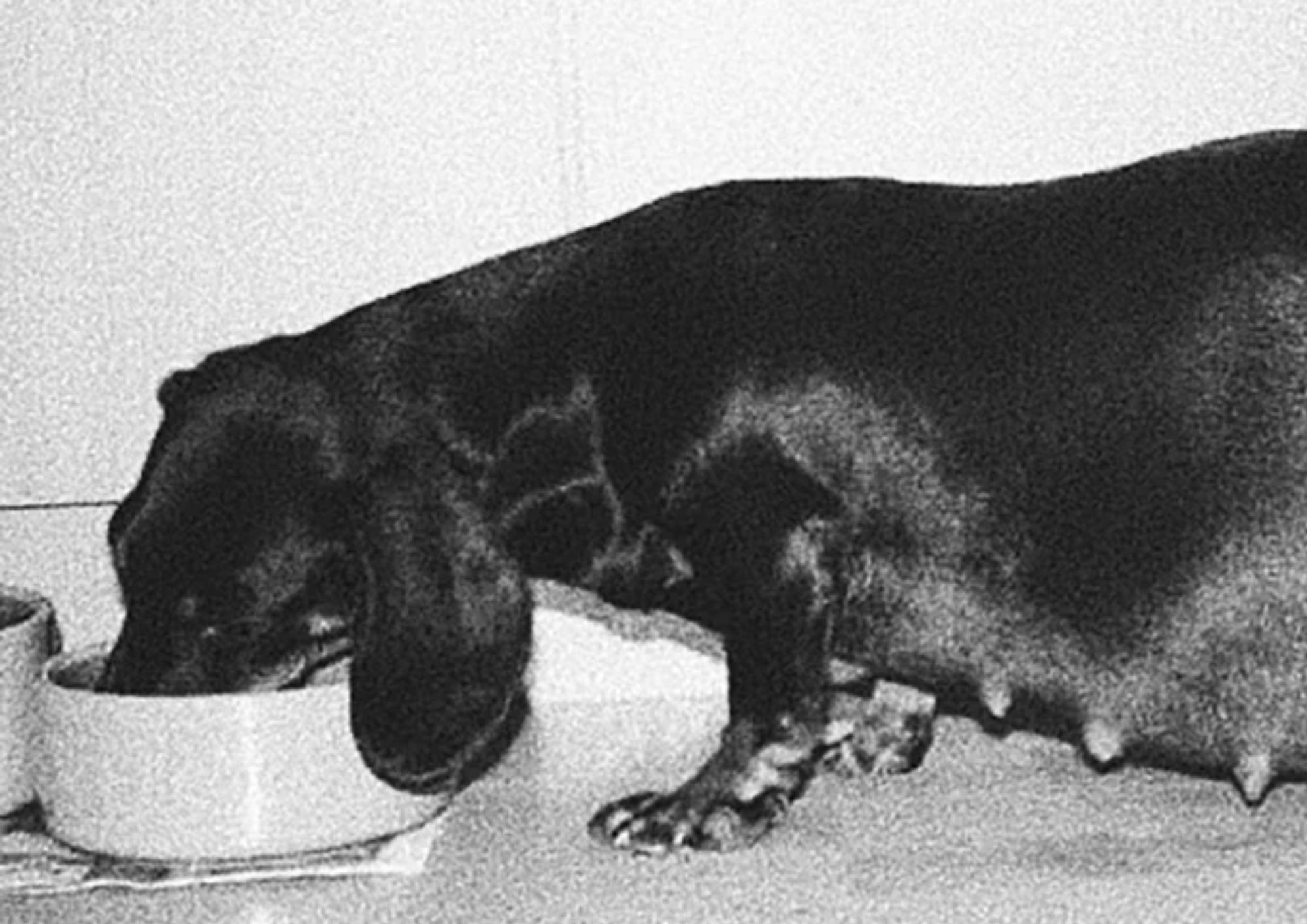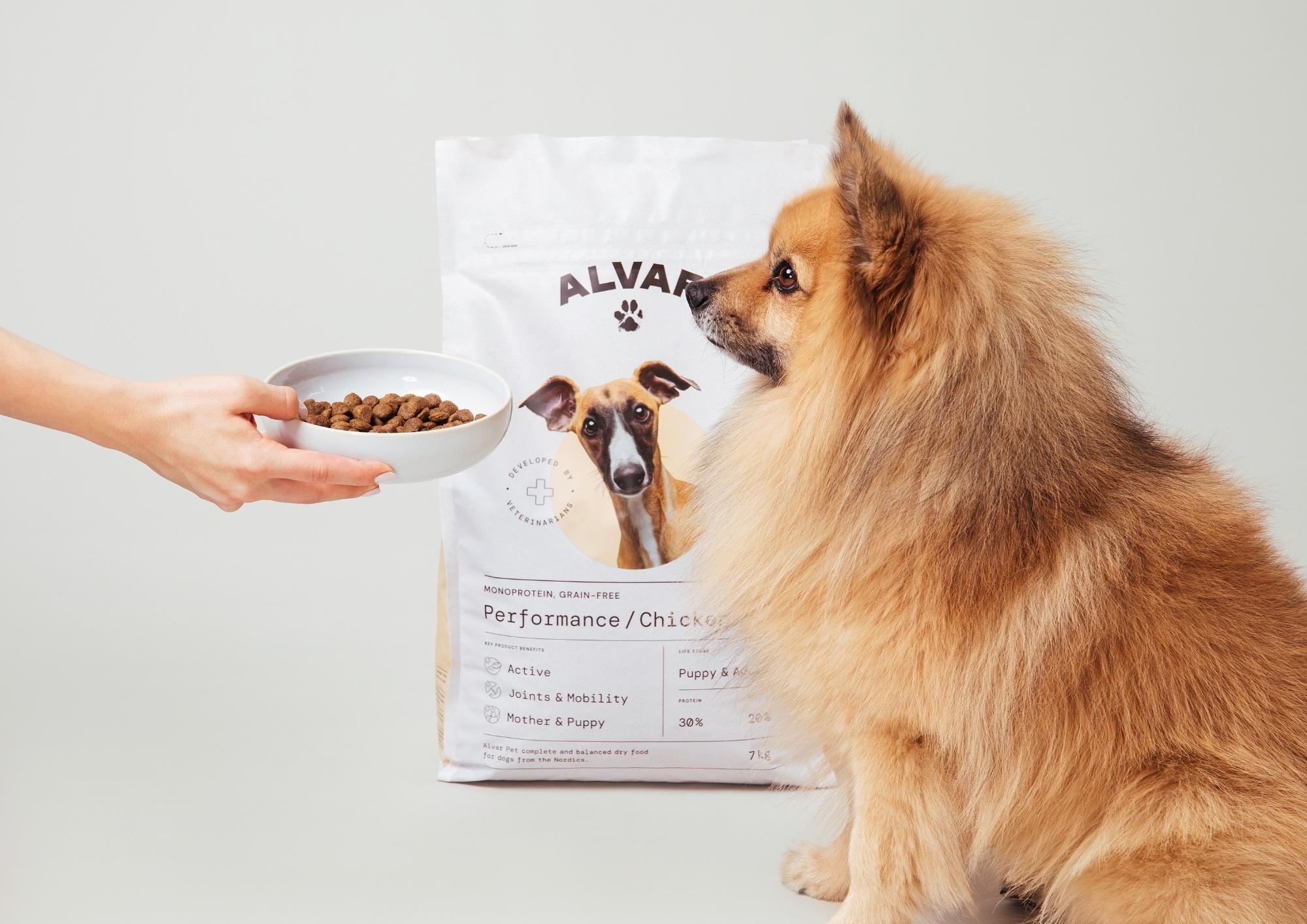If we want to consider a dog’s feeding lifecycle from the very beginning, we must go back in time to the point where mating the dam is still being planned. The right diet supports the dam’s well-being in the best possible way. At the same time, it ensures an adequate intake of nutrients for the ideal growth and development of the puppies from mating until the end of lactation.
Dog Conception
A bitch intended for mating should be in good physical condition, at ideal weight, and fed with high-quality food [read more about a balanced diet for adult dogs]. Overweight is known to adversely affect conception and delivery, while for a poorly nourished dog for one reason or another, pregnancy can present specific challenges.
Early Pregnancy – The First Two Thirds
The developing puppy in the dam’s uterus receives its nutrients through the placenta from the dam’s bloodstream. To ensure ideal growth and development of the puppies, the pregnant dam must receive adequate energy and essential nutrients in proper balance from her diet.
Fortunately, nature has designed this in such a way that the developing puppies usually take everything they need from the dam’s body, and their development is rarely critically endangered due to insufficient nutrient intake. However, the dam’s own condition may unnecessarily deteriorate during pregnancy due to a deficient diet.
During the first two-thirds of pregnancy, the dam’s energy needs do not change significantly, and it is not necessary to change the diet of a pregnant dog fed with a high-quality, balanced diet. However, it is important to ensure the inclusion of certain key nutrients for the development of the puppies.
Important Nutrients
Omega-3 fatty acids. Especially long-chain eicosapentaenoic acid (EPA) and docosahexaenoic acid (DHA) support the development of the puppy’s nervous system, brain, and vision. The best sources of EPA and DHA are fish and fish oil.
Folic acid. Folic acid, or vitamin B9, is an important nutrient for rapidly dividing cells, and its deficiency can disrupt embryo development. Adequate intake of folic acid may help prevent cleft palates in puppies. Folic acid is found in many vegetables and legumes, and it is often added to complete dog foods along with other B-group vitamins.
Antioxidants. Antioxidant nutrients, such as certain vitamins and amino acids, help prevent the harmful effects of increased oxidative stress during bodily stress states, including pregnancy. According to some studies, antioxidants may also support the formation of pregnancy hormones.
Late Pregnancy – The Final Third
During the last third of pregnancy, the puppies in the uterus grow significantly in size, and the dam’s energy needs increase. On the other hand, the dam’s appetite may decrease at this stage due to the pressure of the uterus on abdominal organs and hormonal changes of pregnancy, highlighting the importance of a nutrient-dense diet.
During the last third, it is advisable to feed the dam highly energy-dense and palatable food, possibly in smaller portions several times a day. For some dogs, food can even be made freely available. If needed, the dam’s energy intake can be increased slightly earlier, around mid-pregnancy, but overall, weight gain should still be avoided
Feeding a Lactating Bitch
During lactation, the bitch’s energy requirement is at its highest, and it is directly influenced by the size of the litter and the amount of milk produced for them. It is estimated that milk production for the first four puppies averages about 1 percent of the dam’s body weight per puppy, and from there it increases by about 0.5 percent for each of the next four puppies. In litters of more than eight puppies, the increase in the number of puppies no longer significantly affects the amount of milk produced.
The bitch’s milk production increases during the first four weeks after giving birth, after which the puppies begin to be large enough to eat other food as well. At that point, the amount of milk produced by the dam starts to decrease.
Just like during late pregnancy, there are specific formulas for calculating the increased energy needs during lactation. For example, the energy requirement of a 25-kilogram dog nursing five three-week-old puppies is about 4500 kcal per day. The energy requirement of a non-lactating dog of the same size with normal activity is about 1200 kcal per day. Raising puppies really does take not only time but also a lot of the dam’s energy!
The biggest challenge during lactation is often getting the dam to eat enough high-energy food to meet the huge energy demand. As with feeding a pregnant bitch in the later stages of pregnancy, feeding a lactating dog is easiest with a well-digestible, palatable, high-energy complete food rich in nutrients. In many cases, food can be made freely available to the dam. A lactating dam should get the same amount of nutrients from food as during the end of pregnancy.
Feeding a Newborn Puppy
For the first couple of weeks, feeding a newborn puppy is mostly the responsibility of the dam. If there is sufficient milk production and the puppies are growing steadily, there is usually no need to interfere with feeding. If there are problems with growth or the dam’s milk production is poor for some reason, it may be necessary to supplement the puppies’ diet with milk replacers. The best substitutes for dog milk are specially developed milk replacers available from veterinarians and pet stores.
The energy reserves of a newborn puppy are very small, and as a result of insufficient nutrient intake, puppies can very easily suffer from lack of energy, drop in body temperature, dehydration, diarrhea, and various infections. Caring for and supplementing the diet of a newborn puppy in problematic situations requires knowledge of the subject.
The energy requirement of a newborn puppy is about double in relation to its body weight compared to an adult dog. The dam’s milk production increases up to about four weeks after birth, at which point the puppies naturally begin to eat solid foods alongside milk.
Often, puppies can begin transitioning to solid food from about three weeks of age. The easiest way to learn to eat solid food at first is with soft foods, such as soaked kibble or pureed canned food.
The first puppy food should be well digestible and high in energy, containing all the nutrients the puppy needs in the correct balance. Complete foods specifically designed for this purpose are a safe and good choice. Often during the transition phase, puppies are allowed to eat solid food alongside nursing as much as they want. The amount and frequency of feeding are increased as nursing decreases.
Monitoring puppy growth and ensuring that all puppies receive adequate nutrition is important throughout development.
Weaning usually happens naturally starting around four weeks of age, and is complete by the time of rehoming age. Milk production declines, and the dam gradually loses interest in nursing, especially as the puppies’ first little needle teeth erupt.




